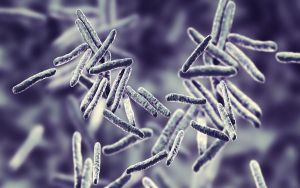A review article published in Natural Product Reports, 2022, 39, 1678-1704 (Royal Society of Chemistry, IF = 15.111, 200 points MEiN), which is the theme of the front cover, shows the division and structural features of benzenoid ansamycins and describes their biosynthetic pathways led by bacteria. The enormous diversity of the natural compounds of benzenoid ansamycins is the result of not only the biosynthesis of these compounds by bacteria, but also various muta- and semi-synthetic approaches that enable the assembly of various types of ansamycin bridges with structurally diverse cores. The paper also discusses the attractive anticancer activity of this type of ansamycins in relation to their molecular targets (heat shock proteins) and the problems related to cytotoxicity in healthy cells. The review article reveals some opportunities to optimize the anti-cancer activity of this type of natural products with reduced toxicity via new hybrid synthetic chemical (semisynthesis) - biological (mutasynthesis) strategies.
The article presents a new structural division of natural ansamycins into three groups: benzenoid, naphthalenoid and atypical (e.g. alicyclic or heterocyclic) and clarifies the term ansamycins, which in many cases has been used incorrectly in the literature. The analysis of the mechanism of binding of benzenoid ansamycins to chaperone proteins, i.e. blocking the function of ATPase, showed promising trends in the modification of the structure of these natural products in order to optimize their biological activity, and the use of these ansamycins in hybrid combinations showed the possibility of more effective delivery of these compounds as potential drugs into cancer cells. The review of these informations led to conclusions regarding the desired structure of such ansamycins, i.e. characterized by high structural dynamics (conformational lability of ansa bridge) and appropriate physico-chemical parameters (lipophilicity, water solubility). The review article also reports the achievements of Przybylski's team in the structural optimization of this type of ansamycins against the background of world literature and reveals the huge therapeutic possibilities that may be hidden in this group of natural products.
